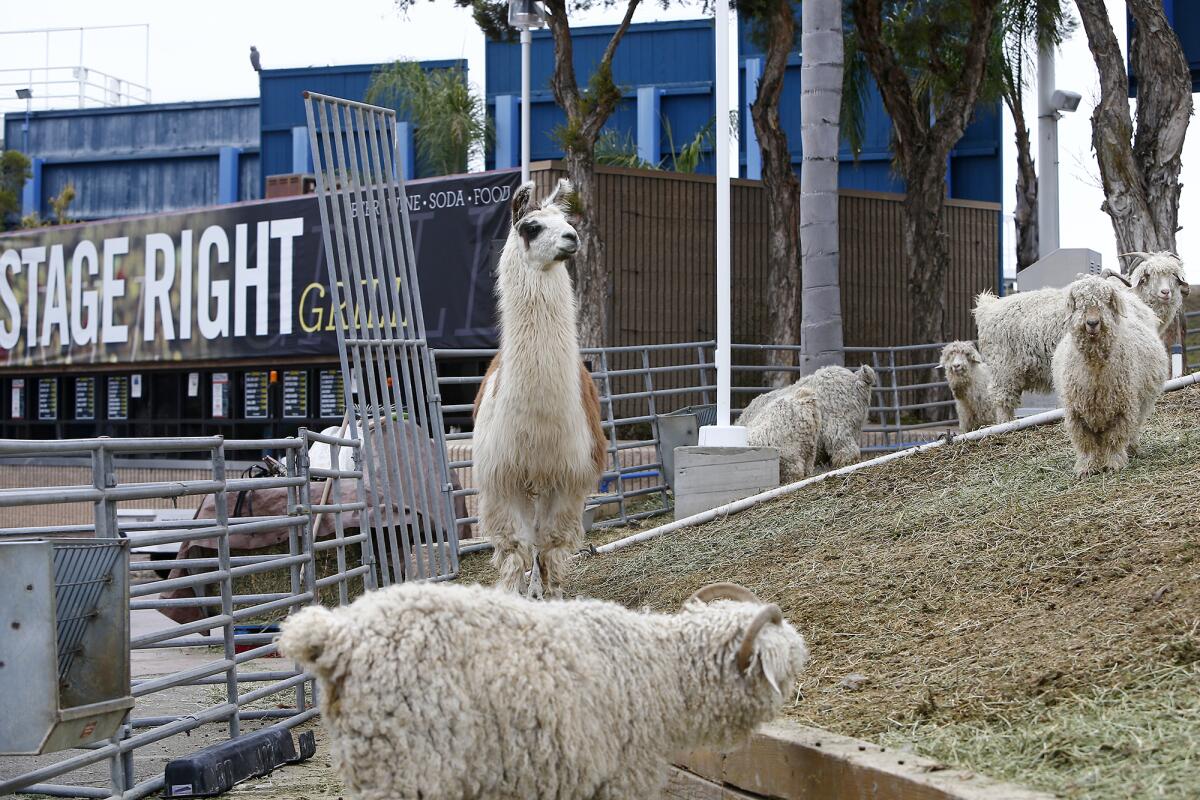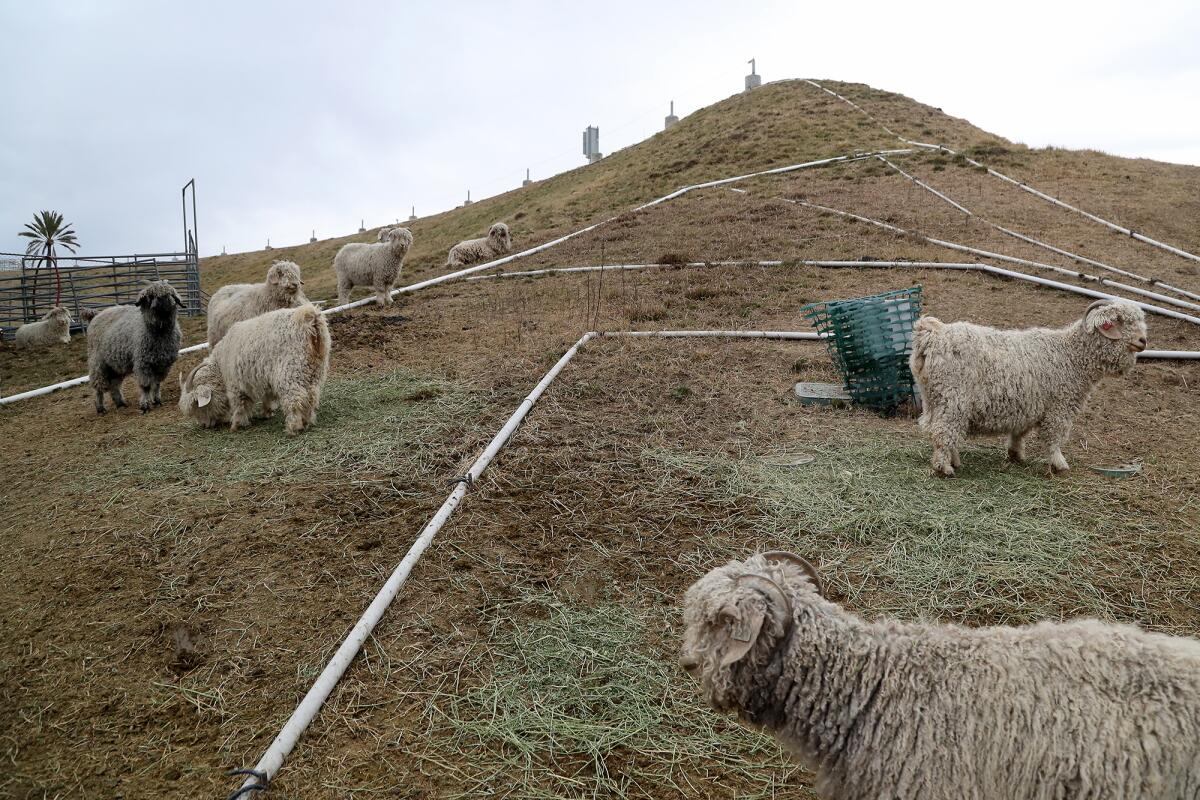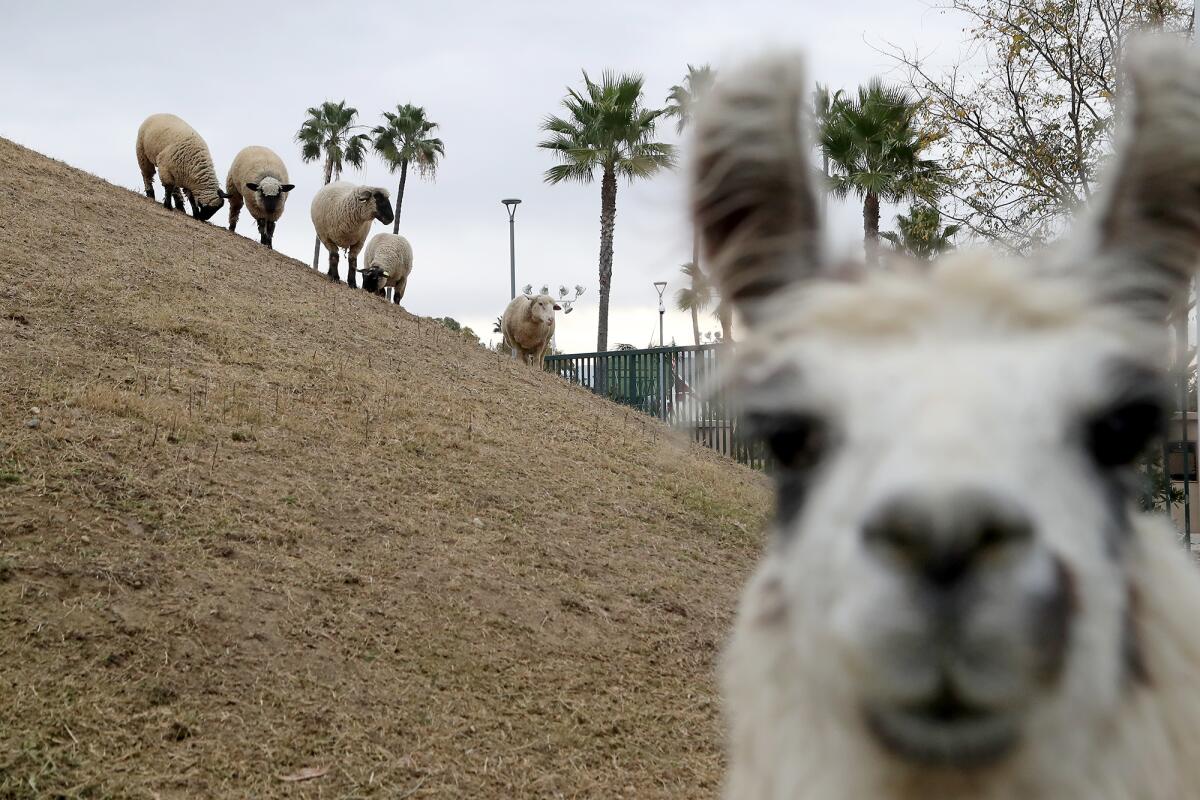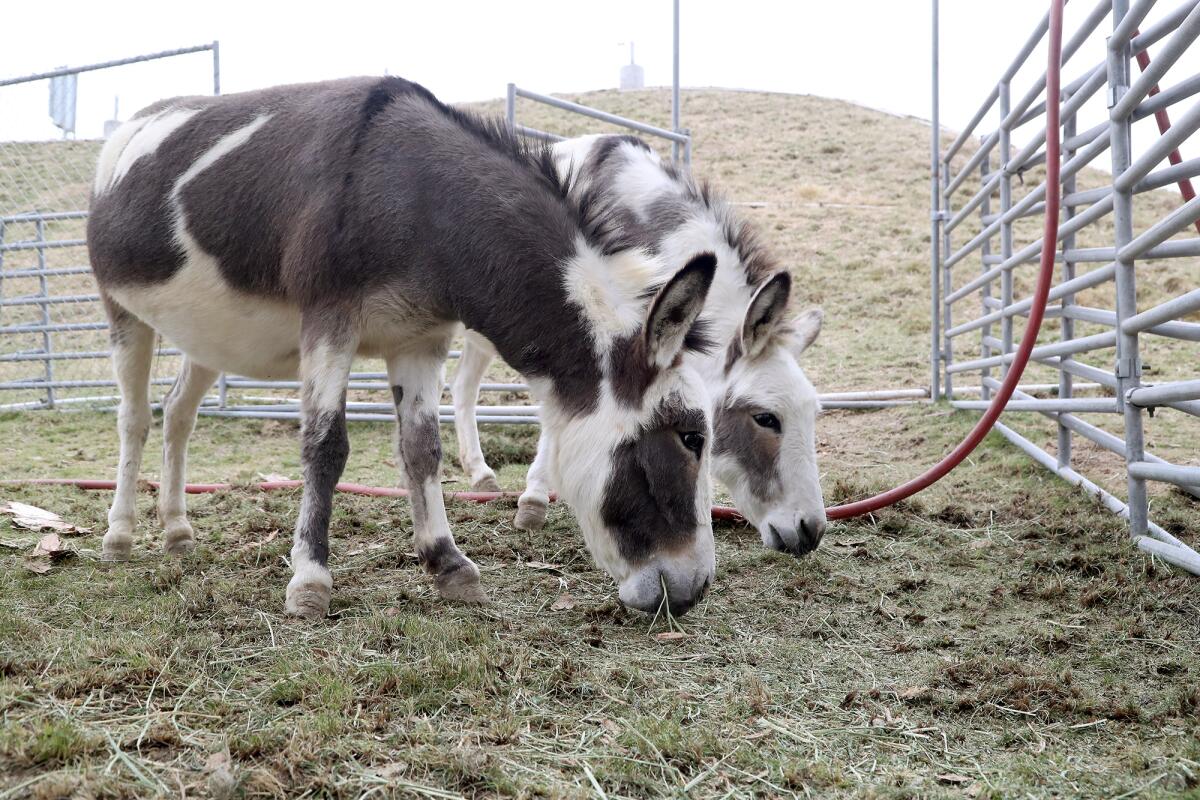Goat herd helps clear up a hillside headache at OC fairgrounds amphitheater

- Share via
Never send in a man to do a goat’s job — that valuable lesson was recently demonstrated at the OC fairgrounds in Costa Mesa, where a herd of caprine helpers moved in to alleviate a massive hillside headache.
A steep 2-acre berm surrounding the Pacific Amphiteatre, built years ago and modified in 2015 to improve acoustics for concerts held there, was presenting a predicament as employees struggled to maintain its stubborn surfaces.
Landscape supervisor Barbara Gregerson said a team of gardeners came three or four times a year to whack the slope’s abundant weeds. They had to strap themselves into harnesses attached to a guide line at the top to keep themselves from falling and charged $4,000 to $5,000 per visit.
“It’s so steep you can’t get machinery up there,” Gregerson said. “If it were flat, piece of cake, but that’s almost a 2 to 1 slope.”

To make matters worse, poor soil quality made it impossible for anything other than patchy grass and weeds to grow on the berm. After endless efforts to hydroseed came to naught, experts advised Gregerson to douse the entire 80,000-acre area with Roundup weed killer.
The conundrum continued until earlier this year, when Gregerson saw the 2018 documentary “The Biggest Little Farm.” The film follows a couple who move from L.A. to the country and transform an arid patch of land into a biodiverse habitat, in part, by using grazing critters to till, aerate and fertilize otherwise dead soil.
“That’s when it kind of clicked and I thought, ‘Oh yeah, I could do this instead,’” Gregerson said.
She pitched the idea in a Sept. 24 meeting of the OC Fair & Event Center Board, explaining annual costs in a four-year pilot program would hover around $21,000 to $23,000, not too much more than the harnessed landscapers. But unlike the gardeners, the goats would be giving something back.
Officials were thrilled.
“This is not only educational, but the expansion of our education programming is very practical and a whole lot of fun,” Chief Operating Officer Ken Karns said at the meeting. “It really doesn’t look to be an additional incremental cost to what we were doing in the past. We’re changing four quarters for a dollar but with a whole lot more.”
The fairgrounds worked out a deal with Northern California goat farmer Allen Mesick, owner of Eureka Mohair Farm and frequenter of OC Fair livestock competitions, to “babysit” a team of 18 angora goats from October to January and again from March to May. In exchange, the goats would get shelter, supplemental food, veterinary care — and lots and lots of grass.

Today, the herd casually mills about the berm, untroubled by the steep terrain, and munches with abandon. But in the process, Gregerson said, the animals are saving the soil.
“Their hooves will help break it up — not a lot, but it’s going to really help roughen up the surface,” she said. “Then, their poop will help get nutrients into the soil. It’s their poop that we’re after.”
Because goats left unattended overnight would be too sweet a temptation for coyotes occasionally spotted on the fairgrounds, two guard donkeys have been thrown into the mix.
Mini-donkeys Rosie and Charlotte roam among the goats, gladly eating abundant grass and hay in lieu of payment. Known to bray loudly at the sign of a threat, the equine animals are essentially like car alarms designed to scare off predators.
“It’s their poop that we’re after.”
— Barbara Gregerson, OC Fair & Event Center landscape supervisor
Upping the security ante, Gregerson and her associates last week welcomed Knitty, a 13-year-old llama whose gentle, long-lashed stare might almost have you fooled. It turns out llamas, unlike mini-donkeys, are capable of doing much more than crying wolf.
“A llama will be a true guard,” Gregerson said, indicating the four-legged creatures are exceptional at stomping on predators. “If a coyote would come in for an attack, a llama would attack back — the llama will protect its herd.”
The hope is the team’s seasonal work will restore the berm’s soil resiliency, allowing staff to hydroseed the area, first with a goat-friendly pasture mix and, eventually, as conditions improve further, with a wildflower mix that will draw pollinators.
“I’m hoping we’ll have what looks like a meadow. Then, we could easily turn this into a pollinator garden, and it could be amazing,” Gregerson said. “That’s really the ultimate goal — we’ll see.”

All the latest on Orange County from Orange County.
Get our free TimesOC newsletter.
You may occasionally receive promotional content from the Daily Pilot.




